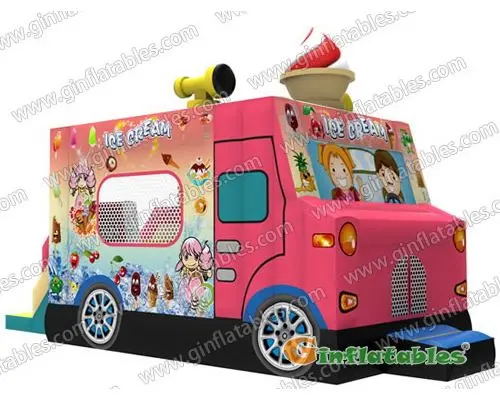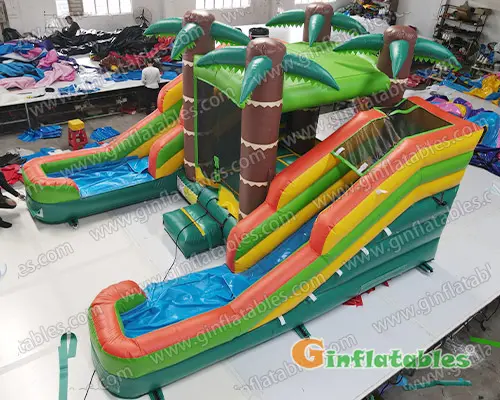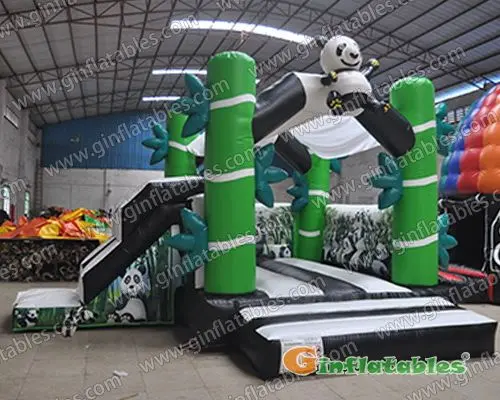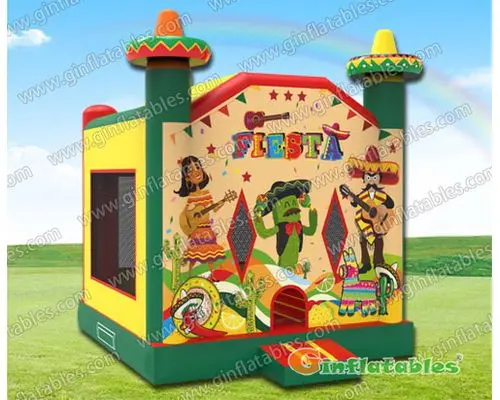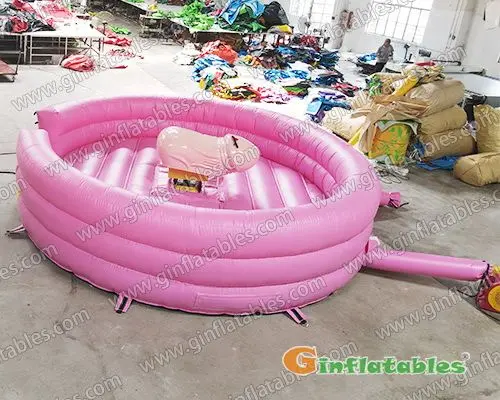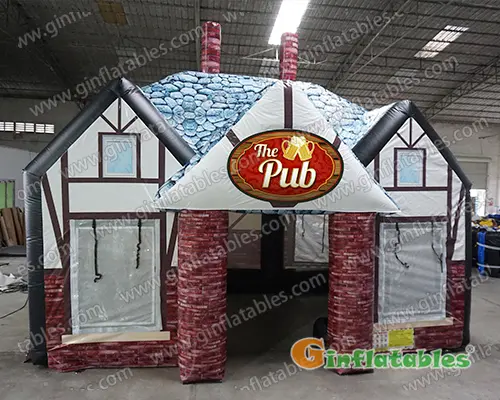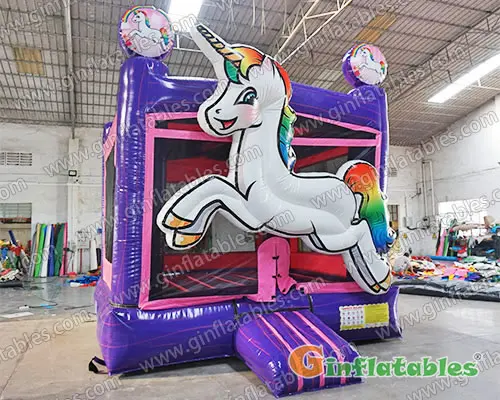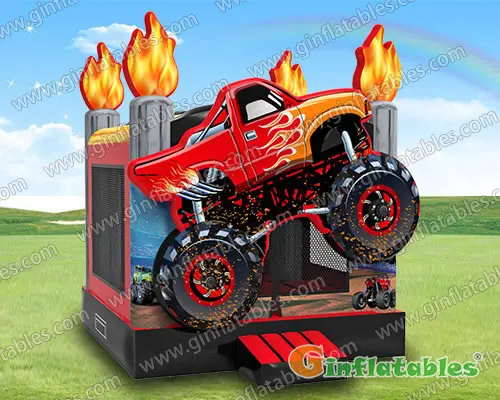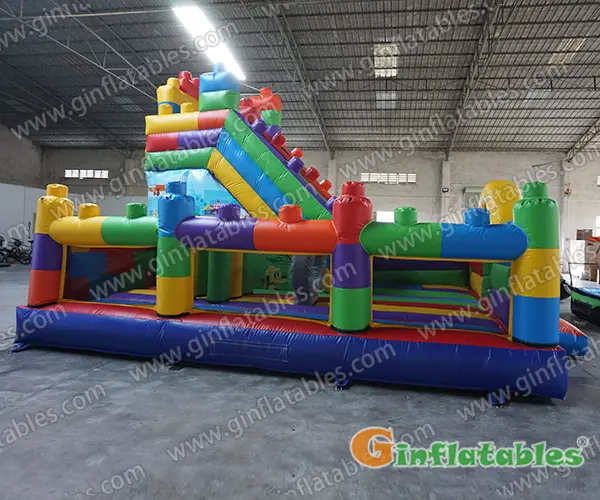Safety Features to Follow for Setting Up a Bounce House
When you want to see your kids have a good time, bounce houses are a great option. Offering a bounce house at a party or gathering might provide children with opportunities to socialize with their peers.
Although bounce houses are not very dangerous, if they are not properly maintained, they can cause injury to your children. That's why we've put together this guide to the safety precautions to take when putting up a bounce house. Let's have a look!
Safety Features to Follow for Setting Up a Bounce House
The technicians ensure that 30-40 heavy-duty metal stakes are used to keep the inflatable bouncer in place. On the other hand, they provide that the anchors are spaced 5 feet apart and that sandbags are used to secure the bounce house.
Of course, the air-filled house could generate problems for various reasons—after all, and it is full of air inside. With that in mind, it's easy to see how the wind is one of the factors that affect its safety. However, how can you be sure that the wind won't harm your kids inside the bounce house?
It's pretty simple! All you have to do now is see if you're blowing hard enough. If it flutters your dress a lot, it's a sign that you should take your kids out of the bounce house right away.
Before allowing your children to play inside the inflatable bouncer, there are a few things to consider.
Keeping an Eye on the Deflation
Even though a bounce house may not appear to be heavy, it is. As a result, if it deflates when your children are there, they may sustain catastrophic injury. As a result, understanding how an inflator works are critical.
You can quickly obtain a copy of the user handbook so that you can respond quickly during an inflationary period. This user handbook can come in helpful if you want to keep the bounce house from falling on your kids. Also, make sure you install a gas-powered inflator to keep track of the bounce house's gas level.
No Jewellery or Shoes
A minor hole in a bounce house can cause it to collapse. Jewelry, glasses, shoes, and a variety of other accouterments are all potential troublemakers. These items may pose a danger to not only the inflatable bouncers but also the children. So, be confident that the children set these materials away before entering the structure.
Know that Bounce Houses and Wind Don't Mix
The wind is one of the most dangerous enemies of an outdoor bounce house. When there's a high wind, the bounce house is tough to keep in contact with the ground. So, when there is a high wind, you must keep your children away from the inflatable.
To guarantee safety, check the maximum wind speed the structure can endure. On the other hand, you can anchor it by putting heavy-duty metal stakes into the ground outside. to keep it from rolling over
Always Keep an Eye on Your Kids
When your children are under your supervision and care, they are the most secure. That's why, rather than entrusting them to someone else, make sure you keep an eye on them. You may avoid pushing, shoving, or any other unethical behavior between the youngsters this way.
What You Should Know
This is a crucial element of the post since it requires you to write down all of the points we'll be discussing right now. So grab a pen and paper, and let's see what we need to remember when putting together a bounce house!
Setting Up an Outdoor Bounce House
• When putting up the bounce house, make sure it's on a level, even surface. Also, make sure there are no pebbles or prickly things underneath the structure that could cause leaks.
• To avoid any undesired incidents, always place your bounce house in an open area away from trees.
• If you're putting your inflatable bouncer on a hard surface, ensure the entrance/exit location has a soft cushion.
• To prevent the structure from dislocating during use, always secure it with heavy-weight pegs in the ground.
Setting Up an Indoor Bounce House
• Make sure the bounce house is set up in an open area, just like it would be outside. This does not imply that you can position it up near the walls around the corner.
• Place a soft surface surrounding the entrance/exit region if the structure is put on a hard surface.
Where Can You Get A Training?
You can always enroll in training to learn how to properly inflate and handle the bounce house if you want to get into this profession. You'll earn a certificate at the end of the course, which can help your company grow. The advantages don't stop there; you can also obtain a competitive edge when purchasing critical insurance.
Ice Cream Bounce Combo With Slide
Product Link: Click Here
If you're looking for a bounce house for your kids, we propose the Ice Cream Bounce Combo With Slide, which is the most fun inflatable bouncer on the market. As the name suggests, this structure is more than just a bounce house; it also has a slide, which all kids enjoy.
Because it is made of commercial-grade materials, it will last a long time. Although this bounce house is not suitable for use indoors, it is ideal for use outside.
Features:
• Inner baffles are reinforced, and a finger guard safety mesh is included.
• CE, EN71, EN14960, ASTM, and ISO standards are all certified and clearance by the Canadian TSSA and the Australian AS3533.4.1-2005.
• On a medium-sized inflatable, there are over 100 reinforcements.
• Only eco-friendly ink was used in the painting.
• Made of commercial-grade 15-18 oz. heavy-duty vinyl that is fire retardant and lead-free.
Pros:
• Offers zipper drain that dries up water at ease
• Top-notch construction
• Integrated with an anti-scratching protective coating
Cons:
• Only suitable for smaller kids
Conclusion
Even though there are specific safety concerns with bounce houses, they are still a terrific way to keep your kids entertained. However, as a parent, you can keep your children safe while playing by following the safety features for setting up a bounce house. After all, a child's safety is paramount!

